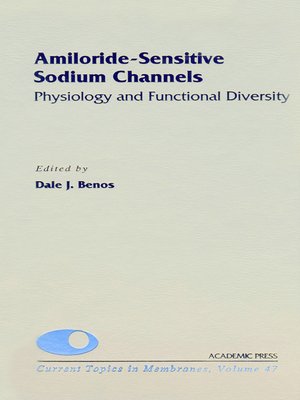Amiloride-Sensitive Sodium Channels
ebook ∣ Physiology and Functional Diversity · Current Topics in Membranes
By Douglas M. Fambrough

Sign up to save your library
With an OverDrive account, you can save your favorite libraries for at-a-glance information about availability. Find out more about OverDrive accounts.
Find this title in Libby, the library reading app by OverDrive.



Search for a digital library with this title
Title found at these libraries:
| Library Name | Distance |
|---|---|
| Loading... |
Sodium reabsorbing epithelia play a major role in whole-body sodium homeostasis. Some examples of sodium regulating tissues include kidney, colon, lung, and sweat ducts. Sodium transport across these membranes is a two-step process: entry through an amiloride-sensitive sodium channel and exit via the ouabain-sensitive sodium/potassium ATPase. The sodium entry channels are the rate-limiting determinant for transport and are regulated by several different hormones. The sodium channels also play a significant role in a number of disease states, like hypertension, edema, drug-induced hyperkalemia, and cystic fibrosis. Amiloride-Sensitive Sodium Channels: Physiology and Functional Diversity provides the first in-depth exchange of ideas concerning these sodium channels, their regulation and involvement in normal and pathophysiological situations.
- Summarizes current state of amiloride-sensitive sodium channel field
- Analyzes structure-function of epithelial sodium channels
- Discusses immunolocalization of epithelial sodium channels
- Examines hormonal regulation of sodium channels
- Discusses sodium channels in lymphocytes, kidney, and lung
- Considers mechanosensitivity of sodium channels
- Provides ideas on sodium channels and disease







